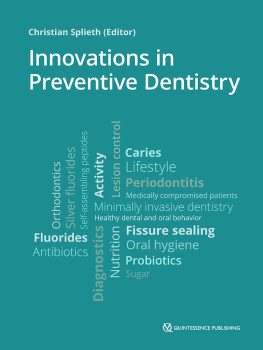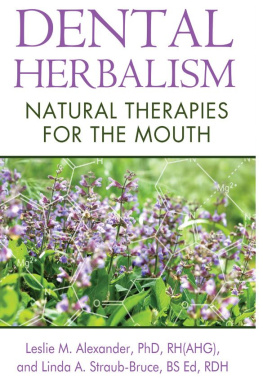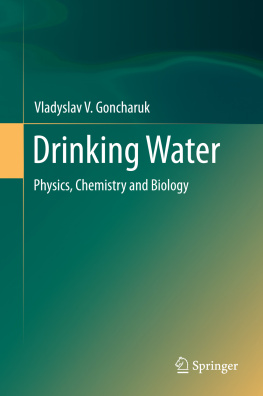Fluoride
Drinking Ourselves
to Death?
Barry A. Groves
Newleaf
Dedication
This book is dedicated to the memory of Dr John Yiamouyiannis (19432000), a man of true honour and integrity, who died suddenly on Sunday, 8 October 2000. Dr Y, as he was known to his friends, worked tirelessly for many years to expose the poor science supporting fluoridation. He will be remembered both as one of that rare breed of scientists who have the courage and commitment to oppose scientific truth to political power and as one of the most brilliant scientists of the past century.
Contents
Foreword
Barry Groves has performed a considerable service to society by producing a clearly written book, which summarises much of the scientific evidence available on the vexed question of the fluoridation of public drinking water supplies. The format of the book is based on a circular notice sent to UK dentists by the British Fluoridation Society (BFS), which detailed a series of questions that might be posed by patients and provides suggested answers to those questions. Barry Groves takes each question and the BFS answer in turn as the basis of a series of short chapters which then present what is known and published about each topic. This juxtaposition serves to put in stark relief the apparent evasive nature or clear bias of many of the BFSs suggested responses.
What are the most important questions? Readers of this book will find that the science underpinning the widespread introduction of drinking water fluoridation, with the claim that it reduces dental decay, appears decidedly thin and shaky. For instance, the data presented shows that there are many examples of dental decay rates being higher in fluoridated than in non-fluoridated areas.
There are relatively few countries in the world that use fluoridation: the USA (where it all started) and some mainly English speaking countries across the globe. In many other countries it is simply against the law to contemplate the mass medication of a whole population with a substance that everyone, even the protagonists, admit has the potential to be toxic at certain doses. A major consideration about fluoride is that the margin of safety for fluoride is about 100 times less than that tolerated for drinking water pollutants. The industrial source of the actual fluorosilicates used to fluoridate and their potential contamination with toxic metals is thoroughly covered in the book.
What other therapeutic prophylactic substance has ever been allowed to be administered to patients, unsupervised, with no control over consumption and no recommendation for dose? Fluoride is recognised as a cumulative toxic substance and there is considerable scientific evidence to show that a proportion of the population is liable to consume more fluoride than is advisable. This can lead, amongst other conditions, to osteoporosis. Since the concept of fluoridating public water supplies was introduced we have become exposed to many other sources, through fluoridated dentifrices, tablets, and dental treatments, which has exacerbated the problem. In addition, for any drug that has ever been produced, there is a minority of the population who, because of their genetic make up, are peculiarly susceptible to its toxic properties. Furthermore there are periods, such as foetal life, infancy and extreme old age, when the bodys ability to detoxify substances and excrete them are less than optimal. It appears that few considerations for such vulnerabilities in water fluoridation have been made.
Whatever the merits of the case, and you can judge those for yourselves, I am personally opposed in principle to the mass medication of whole populations. There is no shortage of products containing fluoride for people to be able to make an informed choice on their own behalf and that of their families. In addition there are no overwhelming arguments for the necessity of such treatment. This combined with the genetic susceptibility of some, as outlined above, makes the whole proposition subject to question on an ethical basis, as discussed in this book.
The book contains a number of accounts of actions that have been taken against dentists and academics who have had the temerity to question the wisdom of mass fluoridation. There would appear to have been clear violations of academic freedom. With a majority of young academics appointed to short term contracts, this is something that should exercise the minds of all those who value the importance of freedom and independence of thought amongst scientists. If academic freedom is ever allowed to be strangled then the type of data that has made the writing of this book possible will become very scarce.
I hope that you will enjoy this book, which must be regarded as essential reading for those who wish to enter an informed debate on this topic. As a microscopist who has had a research interest in the formation and build up of dental plaque and a toxico-pathologist with an interest in the effect of toxic substances on development, I have found this volume to be in turn informative, readable and thought provoking. When you have finished reading, if you come to the same conclusion, recommend it to others!
Dr C Vyvyan Howard MB, ChB, PhD, FRCPath
Toxico-Pathologist
Introduction
Fluoride is more toxic than lead and only marginally less toxic than arsenic.
Clinical Toxicology of Commercial Products, 5th edition
I cannot pretend to be an expert on the matter [fluoridation], but from what I read, it seems to be better, rather than worse, for peoples health.
UK Prime Minister, Tony Blair, Prime Ministers Questions, Hansard, 6 May 1998
If someone were to tell you that you were being subjected to a known poison, without your consent, that the substance could lead to an increased risk of cancer and osteoporosis, and that it was used as a commercial rat poison, you would probably think they were mad. And if they averred that this medication was being administered today with the full knowledge and cooperation of government and the medical profession, you would be sure they were mad. Yet this is what is happening to millions of people in Britain, Ireland and other countries today, for that poison is fluoride.
For nearly fifty years, governments and media have been telling us that fluoride reduces dental cavities, especially in children. It is put in toothpaste, given to children in pill form, used as a gel on childrens teeth, and, even though it frequently occurs naturally, the law allows water companies to add fluoride to water supplies whenever an Area Health Authority asks them to. In Ireland and some other countries, it is now quite difficult, if not impossible, to avoid fluoride.
It may come as a surprise, therefore, that although an impressive list of health, dental and regulatory organisations in Britain and Ireland (see Table 1) advocate water fluoridation and actively campaign for its wider use, they represent very much a minority opinion within the scientific community; and that no country in continental Europe and only a handful of countries worldwide fluoridate their water supplies to any great extent. In other words, most have not been convinced by the pro-fluoridation lobby, even though the supposed benefits and safety of fluoride are promoted as incontrovertible.
Association for Public Health
Association of Directors of Public Health Medicine
British Association for Community Child Health
British Association for the Study of Community Dentistry
British Dental Association
British Dental Health Foundation







![Ramiel Nagel - Cure Tooth Decay: Remineralize Cavities and Repair Your Teeth Naturally with Good Food [Second Edition]](/uploads/posts/book/53583/thumbs/ramiel-nagel-cure-tooth-decay-remineralize.jpg)
